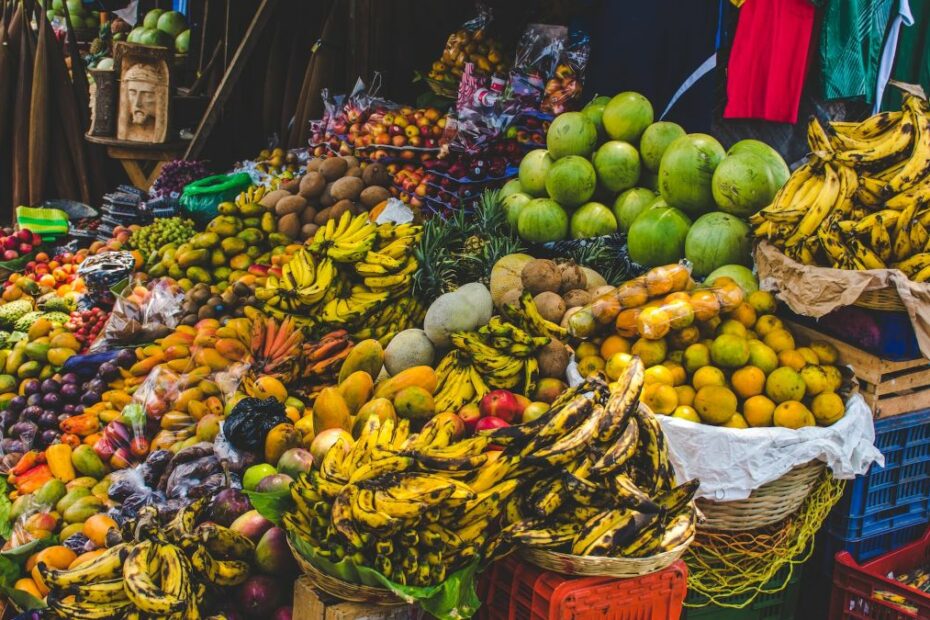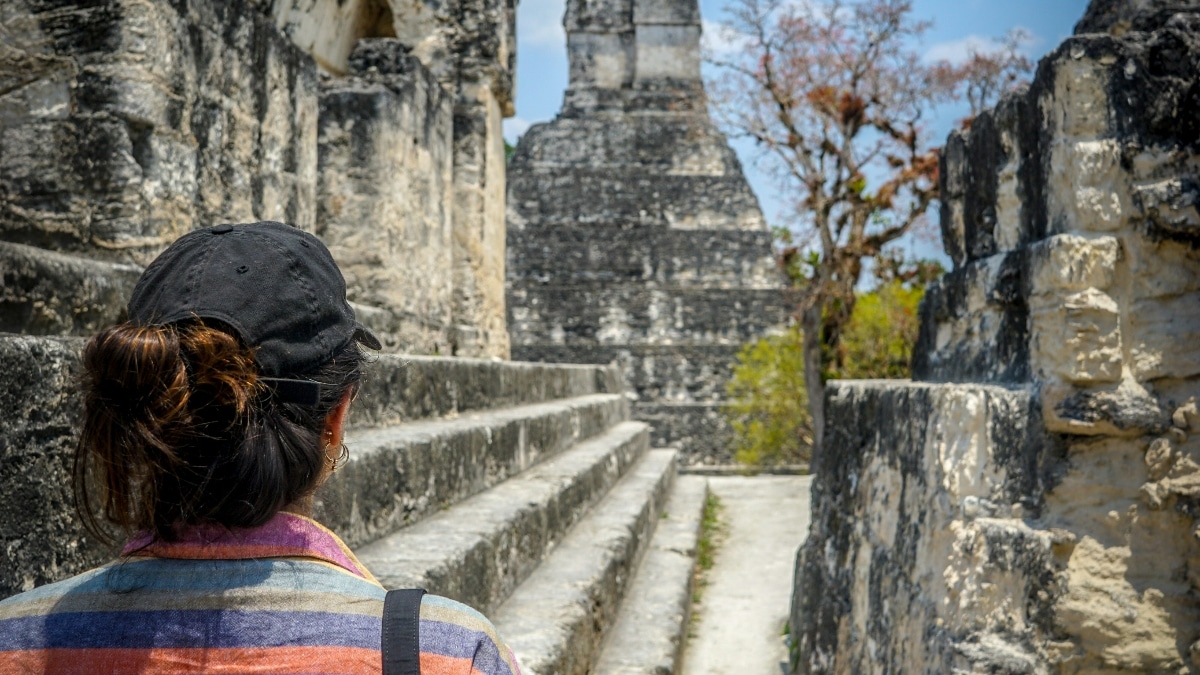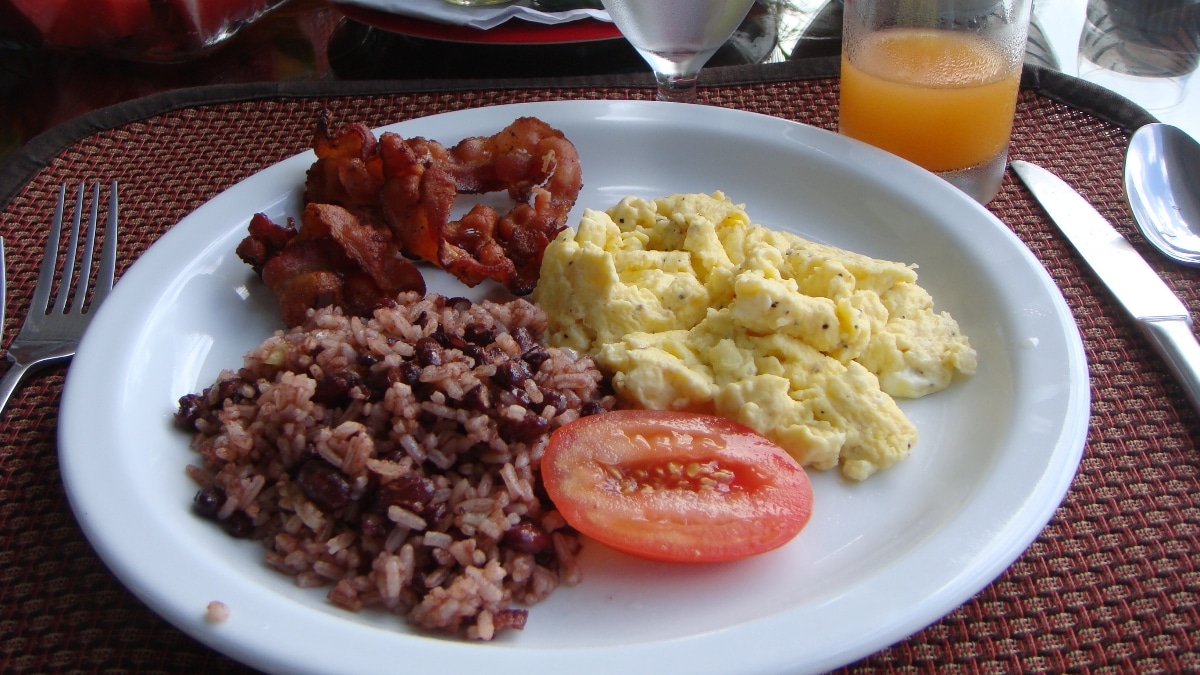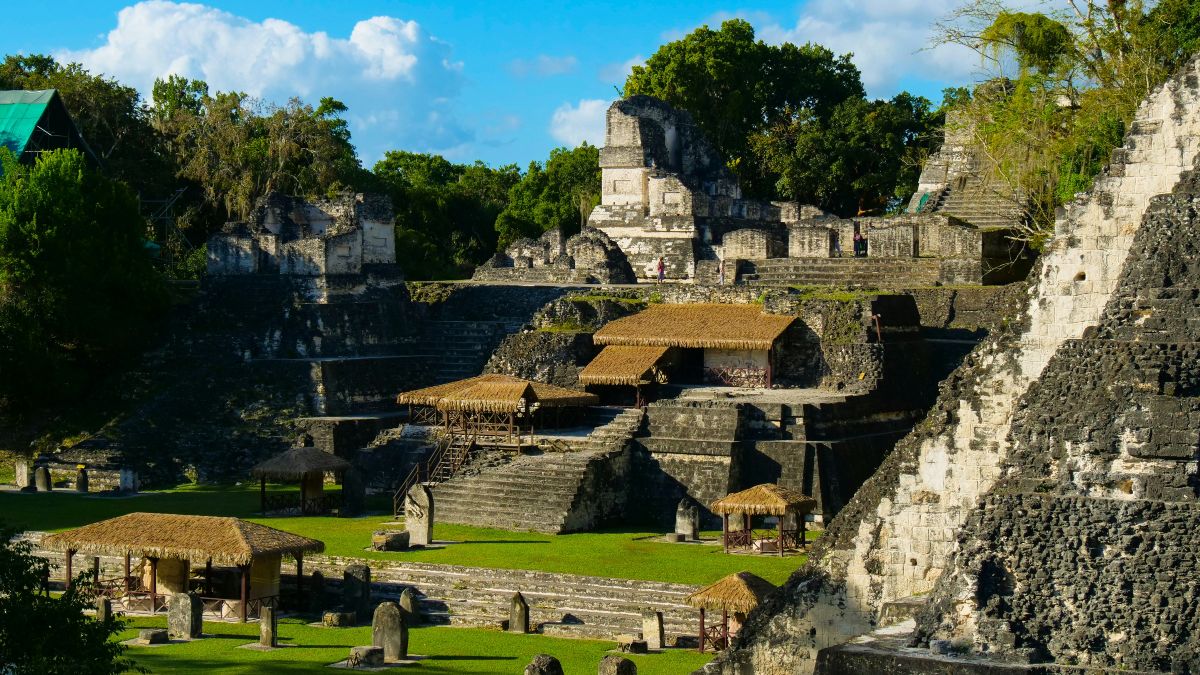What’s it really like doing the daily or weekly grocery shopping in Antigua, Guatemala? Follow along with us through supermarkets where hot dogs are handed out as samples, past hanging meat with no refrigeration, and into the vegetable stalls where grandmas reign supreme at bargaining. A personal tale of shopping in Central America.
Grocery shopping in Antigua, Guatemala is an assault on the senses, almost a metaphor for daily life itself in this part of the world. Chaotic, beautiful, colorful, maddening, but in the end, well worth it.
Modern Supermarkets: The La Bodegona Experience
We have supermarkets in Antigua, obviously, but not like those back in Europe or North America. In La Bodegona, for example, you’ll find a jumble of too-small aisles crammed with shoppers, limited products, and salsa music blasted so loud that conversation is almost impossible.
Employees hand out free samples to everyone passing them: slices of mortadella, raw hot dogs, mayonnaise squirted on a saltine, artificial sweeteners added to orange juice.
To promote sales, items will often have another random item taped to them. A ballpoint pen taped to slices of processed cheese. A plastic cup taped to a four-pack of toilet paper. Maybe a can of tuna attached to a bottle of rum. Or three pencils with a can of sardines? Who decides what item goes with what? Do they have meetings about this?
The Municipal Market: An Introduction
Despite the joys of the supermarket, most people go to the public market. Covering several acres on the western edge of the city, the market is a labyrinth of small stalls, most only one to two meters wide and a meter deep.
The municipal market sells pretty much everything imaginable: clothing, watches, cell phone covers, cooking utensils, rope, power tools, fireworks, live chickens, roasted iguanas impaled on a stick, concrete fountains, furniture, sculptures, cleaning products, plates, cups, bowls, belts, and of course, fresh produce.
Navigating the Market’s Entrance
After entering through a small doorway, you’ll pass small stalls crammed with bootleg CDs and DVDs. Rival bootleg CD/DVD vendors try to attract you with pounding music.
Once past these vendors, you now run the gauntlet of the comedores (small lunch-counter restaurants) serving typical Guatemalan lunches of stews, sautéed cow spleen, chicken soup, tripe salads, and rice plates. The comedor owners will try to grab your arm to pull you into their stalls to buy a plate for US$2 or less.
The room is a haze of smoke from the charcoal stoves used and a riot of smells, sights, and the noise of crying children.
View this post on Instagram
The Butcher Section
A right turn at the next corner brings you to the butcher section. Two parallel rows of stalls feature whole sides of beef and pork hanging unrefrigerated from hooks. Whole chickens lie on a counter while the vendor whisks the flies away. Vendors sell sausages made on site using the entrails of the animals as casings.
Bright red chorizos feature crushed achiote peppers mixed with the meat, while more natural-colored longanizas come seasoned with herbs like parsley and cilantro with minced onions.
If you wish to buy a beef tenderloin, the butcher will be happy to cut the steak off of a half-cow hanging from the hook. In the back, the offal vendors preside over a counter of tripe, livers, kidneys, and brains. Street dogs slink around hoping for a fallen scrap.
The Charcoal Corner
The back of the market, away from the clothes and fabric, is where you can buy charcoal. To get there, go past the piñata and candy sellers and carry on past the stalls filled with plastic bins of all sizes and colors. When you reach a corner with black dust covering the floor, you’re where you need to be.
They still make charcoal the old way in the countryside. They start a roaring fire and then cover it with dirt to snuff out the oxygen. Then they leave it to cool for a few days and wash off the dirt before weighing and bagging the charcoal. They use ocote wood to make charcoal, a pine filled with sap. A bag of charcoal and a small bundle of ocote will set you back about $1.50.
The Vegetable Section: Haggling Required
After picking up your charcoal, the vegetable stalls beckon. In a large room lit by small windows, the vegetable vendors sell their wares. The sellers are almost always diminutive women surrounded by baskets of fruits and vegetables piled around them.
These stalls are the largest in the market with no prices marked. This means that unless you know a specific seller, you need to haggle. Buyers may expect prices to drop when quantities purchased rise, but this is not always the case. The best tactic is to position yourself next to an elderly matron and demand the same prices she gets. Everyone knows elderly matrons are the shrewdest bargainers.
Prices are cheap to the foreigner, haggling or no haggling. Avocados for 15 cents, tomatoes 25 cents a pound. A huge cabbage with dirt still clinging to the leaves is about a dollar, but with a strategic “ayyyyyyy… no…,” you can reduce that price.
Haggling is a part of the experience, and if there’s no give or take, the vendor won’t respect the customer. You’ll be just another gringo with too much money and not enough street smarts, better off shopping out-of-town in one of the modern western-style supermarkets. Harsh but true.
The Journey Home
If you realize you’ve forgotten something afterward, never fear. Back in the butcher stall area on your way out, unlicensed vendors squat on the floor selling their wares. These are often nothing more than a few pounds of tomatoes or a dozen guicoy squash.
Laden with groceries, you make your way out of the market building and past the mass of shoeshine boys. One of them points at your leather shoes and declaims the accumulated dirt and scuffs in the hopes of a commission.
While weaving past the drunks, delivery trucks, motorcycles with a family of four all riding together, the bags chafe your shoulder and hands. You reach the entrance to the market complex and wonder if you can make it like this on foot. Luckily, a three-wheeled tuk-tuk beckons you with the promise of a jolting ride over the cobblestones back home.
Back home, exhausted, you place the perishables in the fridge: a steak, a dozen chorizos, a block of soft white cheese wrapped in banana leaves, fruits and vegetables, and a large plastic bag of guava juice poured into an earthenware pitcher.
You reflect on your ordeal and decide that a cold beer and a two-hour nap in your backyard hammock is well-earned.




